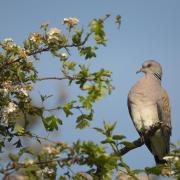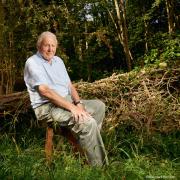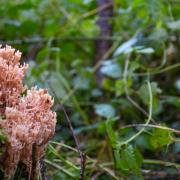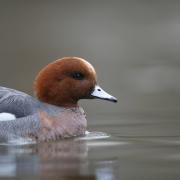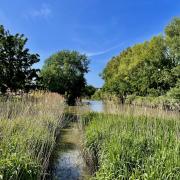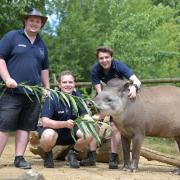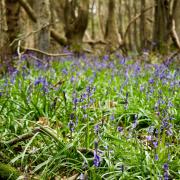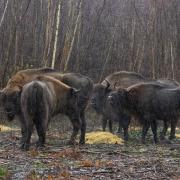More than half a million people are expected to watch and count their garden birds for this year’s Big Garden Birdwatch, organised by the RSPB.

The world’s largest garden wildlife survey, now in its 38th year, takes place on 28, 29 and 30 January 2017. We are asking Londoners to spend just one hour watching and recording the birds they see at home, and then send their results to the RSPB.
In our increasingly urban world, ensuring there is still room for wildlife is essential to the survival of many familiar species. The Big Garden Birdwatch provides valuable information about the wildlife using our gardens in winter, enabling the RSPB to monitor trends and declines. It is also a chance to take time to enjoy the nature on our doorsteps. Over half a million people counted more than eight million birds in 2016; and even more people are expected to take part this year.
In response to demand, for the first time this year the Birdwatch will take place over three days, including the Monday, giving workers the opportunity to take a screen break and participate from their office gardens.
The RSPB’s Tim Webb said: “The information kindly provided to us gives an insight in to the wildlife in private gardens; spaces which researchers can’t normally access and that’s hugely significant. As an indicator of the state of our environment in Kent, you can’t beat birds. If we have a healthy environment, birds thrive. They’re easy to see and record compared with other forms of wildlife. So we need as many people as possible to let us know what birds they see from their homes. Even if you see nothing during your Big Garden Birdwatch hour, that’s important information too, so please let us know.”

Nationally last year the house sparrow retained its position at the top spot; with the starling and blue tit rounding off the top three. In Kent, the wood pigeon was top-bird; followed by house sparrow and starling.
“What we see in Kent from the results of the past three years of Big Garden Birdwatch results is that most of the county’s bird species are relatively stable, suggesting birds are generally finding the food and shelter they need. But where there have been declines it’s been among those species which rely more on natural food supplies rather than from garden feeders, such as starling, blackbird and chaffinch. That suggests there’s not enough seed nor bugs to naturally maintain the numbers of birds and other wildlife that make-up a healthy, balanced environment. In short, there’s a natural food crisis for Kent’s wildlife.” Added Tim.
This year, if the cold snap persists, we could see some more unusual birds appearing in UK gardens. Look out for Scandinavian visitors such as redwing, fieldfare and waxwing in search of berries. While redwing and fieldfare come to the UK every winter, waxwings come in large numbers only in some years when food supplies are scarce at home. Waxwings arrived on the east coast in their hundreds earlier this winter and have since dispersed more widely; having now been reported as far west as Wales and Ireland.
Goldfinches are faring less well in Kent and other rural areas compared with London and the UK’s large urban centres. This behaviour change is seen as further evidence of a decline in sources of natural food and shelter in rural areas.

As well as counting winged garden visitors, the RSPB is once again asking participants to log some of the other wildlife they have seen throughout the year, such as grass snakes, hedgehogs, stag beetles, stoats and moles.
RSPB South East Conservation Manager Alan Johnson said: “Our wildlife is facing a tough time. For example it’s estimated we’ve lost more than half of our hedgehogs in the last 50 years. We’re going to include this part of the survey every year now, enabling us to monitor the distribution of our other wildlife as well as trends in bird numbers.”.
David Wembridge, Mammal Surveys Co-ordinator, People’s Trust for Endangered Species, said: “Mammals are a less showy lot than birds, but their presence in gardens is as important a measure of the natural value of these green spaces. Recording wildlife, in surveys like Big Garden Birdwatch, gives us a connection to our wild neighbours, particularly those we might overlook.”
Dr Fiona Mathews, Chair of The Mammal Society, said: “Gardens can offer fantastic habitat for wild mammals, simply leave things a bit untidy and watch what happens. For example, a bramble patch and a pile of fallen leaves can provide a good nesting site for hedgehogs, while bats will feed on night-flying insects attracted to blackberry flowers.”
Dr John Wilkinson from Amphibian and Reptile Conservation (ARC), said: “It’s great to see that the Big Garden Birdwatch is again recording species such as grass snakes and slow-worms, whose habitats are declining in the wider countryside. Slow-worms are a gardener’s friend: you can encourage them into your garden by having a compost heap which is left undisturbed over the summer so they can give birth there; they will repay you by demolishing your slugs! If you’re lucky, grass snakes may even use your heap for egg-laying.”
The Big Garden Birdwatch is part of the RSPB’s Giving Nature a Home campaign, aimed at tackling the housing crisis facing the UK’s wildlife. Gardens provide invaluable resources for many species, especially in urban areas where natural habitats are disappearing. The RSPB is asking people to invite wildlife into their own gardens, balconies and outside spaces. This may involve putting up a nest box for birds, creating a pond for frogs and newts or planting a window box for bees. Wherever you live, you can help give nature a home.
To take part in the Big Garden Birdwatch 2017, watch the birds in your garden or local park for one hour at some point over the three days. Only count the birds you see land, not those flying over. Tell us the highest number of each bird species you see at any one time; not the total you see in the hour.
For your free Big Garden Birdwatch pack, call FREEPHONE 0800 665 468 or text BIRD to 70030. Note. Network charges may apply when texting. Free downloadable packs are available from our website: rspb.org.uk/Birdwatch.
Results will be published in March 2017.
The parallel event, Big Schools’ Birdwatch takes place during the first half of spring term, from the 3 January to the 17 February 2017. Further information can be found at rspb.org.uk/schoolswatch
Get Ready for the Big Garden Birdwatch at RSPB Rainham Marshes at Purfleet on the London/Essex border. Saturday 21 January and Sunday 22 January, pop in any time between 10am and 4:30pm.
RSPB Dungeness, Kent.
Saturday 28 Jan
A presentation about the Big Garden Birdwatch, helping people identify garden birds on our feeders and creating feeders that people can take home with them.
The event runs from 11am to 1pm and prices are £6 per adult, £3 per child. 20% discount for members. Booking needs to be made in advance by calling or emailing the reserve and payment is taken on arrival on the day.




